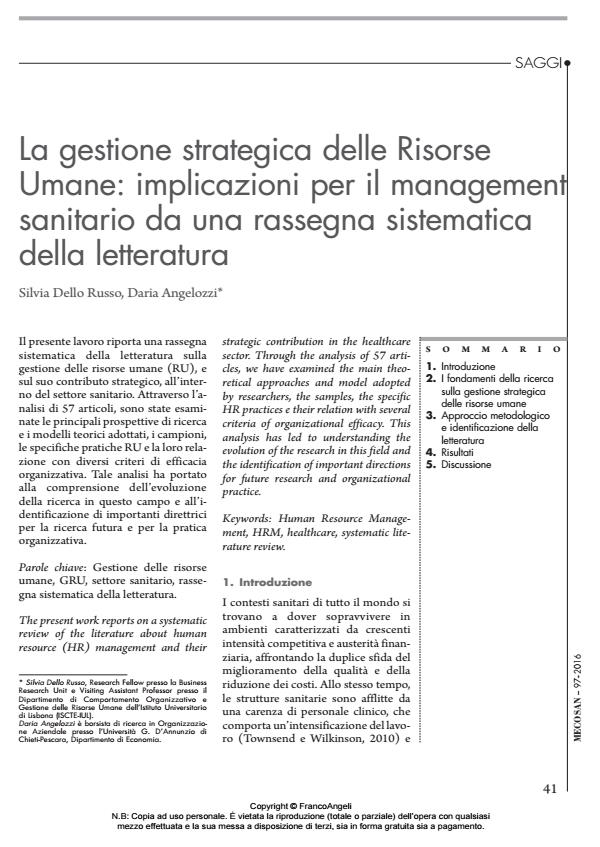La gestione strategica delle Risorse Umane: implicazioni per il management sanitario da una rassegna sistematica della letteratura
Journal title MECOSAN
Author/s Silvia Dello Russo, Daria Angelozzi
Publishing Year 2016 Issue 2016/97
Language Italian Pages 29 P. 41-69 File size 23707 KB
DOI 10.3280/MESA2016-097004
DOI is like a bar code for intellectual property: to have more infomation
click here
Below, you can see the article first page
If you want to buy this article in PDF format, you can do it, following the instructions to buy download credits

FrancoAngeli is member of Publishers International Linking Association, Inc (PILA), a not-for-profit association which run the CrossRef service enabling links to and from online scholarly content.
The present work reports on a systematic review of the literature about human resource (HR) management and their strategic contribution in the healthcare sector. Through the analysis of 57 articles, we have examined the main theoretical approaches and model adopted by researchers, the samples, the specific HR practices e their relation with several criteria of organizational efficacy. This analysis has led to understanding the evolution of the research in this field and the identification of important directions for future research and organizational practice.
Keywords: Human Resource Management, HRM, healthcare, systematic literature review
- Gestire il personale in Sanità: una mappatura delle caratteristiche della Funzione Risorse Umane nel contesto italiano Marta Barbieri, Lorenza Micacchi, Roberta Montanelli, Francesco Vidè, in MECOSAN 114/2020 pp.33
DOI: 10.3280/MESA2020-114003
Silvia Dello Russo, Daria Angelozzi, La gestione strategica delle Risorse Umane: implicazioni per il management sanitario da una rassegna sistematica della letteratura in "MECOSAN" 97/2016, pp 41-69, DOI: 10.3280/MESA2016-097004